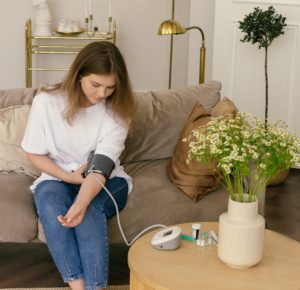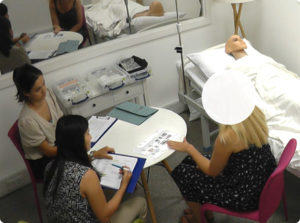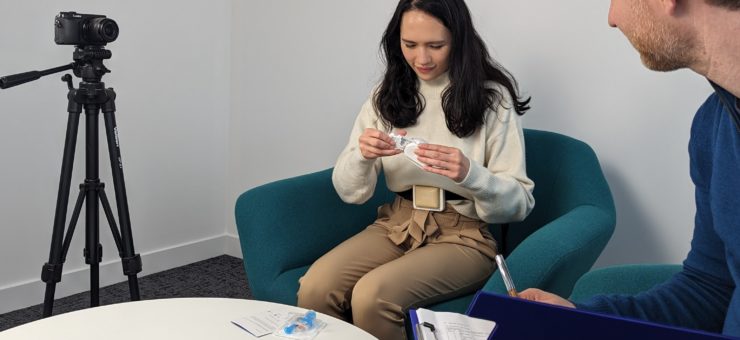Bridging the gap: Adapting hospital equipment for home use
5 February 2024
The healthcare landscape is evolving, and one of the significant shifts is the increasing emphasis on home-based care. As technology advances and the demand for personalized healthcare grows, there’s a pressing need to adapt hospital equipment for home use. This transformation not only facilitates patient comfort but also addresses the challenges of an aging population, chronic illnesses, and the rising cost of healthcare.
Why adapt hospital equipment for home use?
Emphasizing patient-centered care is at the heart of adapting hospital equipment for home use. Patients are more likely to recover faster and experience improved well-being in the comfort of their homes. This shift aligns with the idea that healthcare should revolve around the patient’s needs, promoting a more holistic and individualized approach.
The cost of hospital care can be exorbitant, and the burden often falls on both patients and healthcare systems. Adapting equipment for home use allows for cost-effective alternatives to inpatient care. Patients can receive the necessary treatment without the need for extended hospital stays, thereby reducing the financial strain on individuals and the healthcare system.
For individuals with chronic illnesses or disabilities, being able to use adapted devices at home promotes independence and a sense of normalcy. It enables them to manage their conditions with greater autonomy, reducing their reliance on caregivers and fostering a higher quality of life.
Hospitals are frequently overwhelmed, particularly during times of public health crises. Adapting equipment for home use can help alleviate the strain on hospital resources by shifting some aspects of care to a home setting. This not only eases the burden on healthcare facilities but also minimizes the risk of exposure to infectious diseases.

Woman taking her blood pressure at home
Designing to adapt hospital equipment for home use:
When adapting hospital equipment for home use, its important to remember that you are designing for a very different set of intended users. In the hospital environment, users are highly trained and experienced with the equipment they interact with, with knowledge of the type of interfaces, information involved and types of interaction. For home use however, it may be the first time the user has interacted with a piece of equipment like this and especially with something related to their health, this can be an anxiety filled experience if the design isn’t carefully considered.
Learning about and understanding your intended users, is therefore a key element in a successful transition from hospital to home. Through research activities, such as interviewing people who have been patients in similar situations to the intended use, you can gain understanding of their experiences, fears, pain points, and the things that worked well in their treatment journey. At the same time, you can also develop an understanding of their skills and abilities – the building blocks of how they’ll interact with your product, and the starting point to developing a design that empowers them to take control of their own care at home.

Human Factors study conduced in early stage device design
Through continued engagement during the design process, you can ensure that what you’re developing works for your intended users. Testing concepts with patients, whether early stage and low fidelity or more developed and functional, can quickly help you identify what aspects of your design do and don’t work. Repeating this as your product evolves and matures helps ensure that your design is headed in the right direction and leads you to the point where you have a product that can truly allow patients to access the benefits of hospital to home.
Key points to consider
Whilst engaging with and learning from your intended users will always be the best way to ensure your product is properly adapted to home use, there are a number of key points to make sure you have covered to lead you in the right direction.
Hospital equipment is often designed with bulk and stability in mind, which may not be suitable for home environments. Adapting equipment for home use involves redesigning it to be more compact, lightweight, and easily transportable. This ensures that patients and caregivers can maneuver the equipment within the confines of a home setting.
Hospital equipment tends to have complex interfaces that require specialized knowledge to operate. Adapting for home use involves simplifying these interfaces, making them intuitive and user-friendly. This allows patients or their caregivers to operate the equipment confidently without constant professional supervision.
Incorporating remote monitoring capabilities into hospital equipment allows healthcare providers to keep track of patients’ health status from a distance. This not only enhances the quality of care but also provides timely intervention if any issues arise. Connectivity features also enable seamless communication between patients, caregivers, and healthcare professionals.
Adapting hospital equipment for home use requires a corresponding investment in education and training programs. Patients and their caregivers must be adequately trained to use the equipment safely and effectively. Providing comprehensive training ensures that individuals feel confident in managing their health at home.
The transformation of hospital equipment for home use is a crucial step toward redefining the healthcare landscape. By prioritizing patient-centered care, reducing costs, promoting independence, and mitigating hospital overcrowding, this shift addresses the evolving needs of an increasingly diverse and aging population. As technology continues to advance, the ongoing adaptation of hospital equipment for home use is set to play a pivotal role in shaping the future of healthcare delivery.
Kamaal de Silva, Principal Mechanical Engineer, recently gave a presentation about devices for home use at Pharmapack 2024.
Do you have a device that could be adapted for home use? Get in touch with us to see how we can help.


